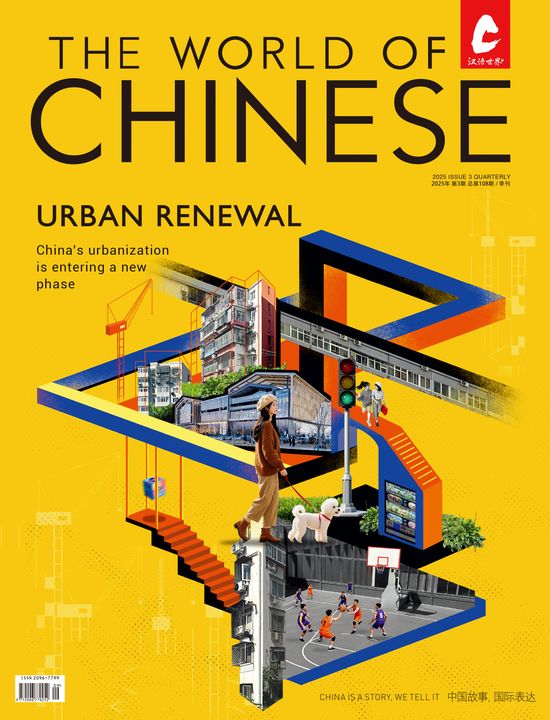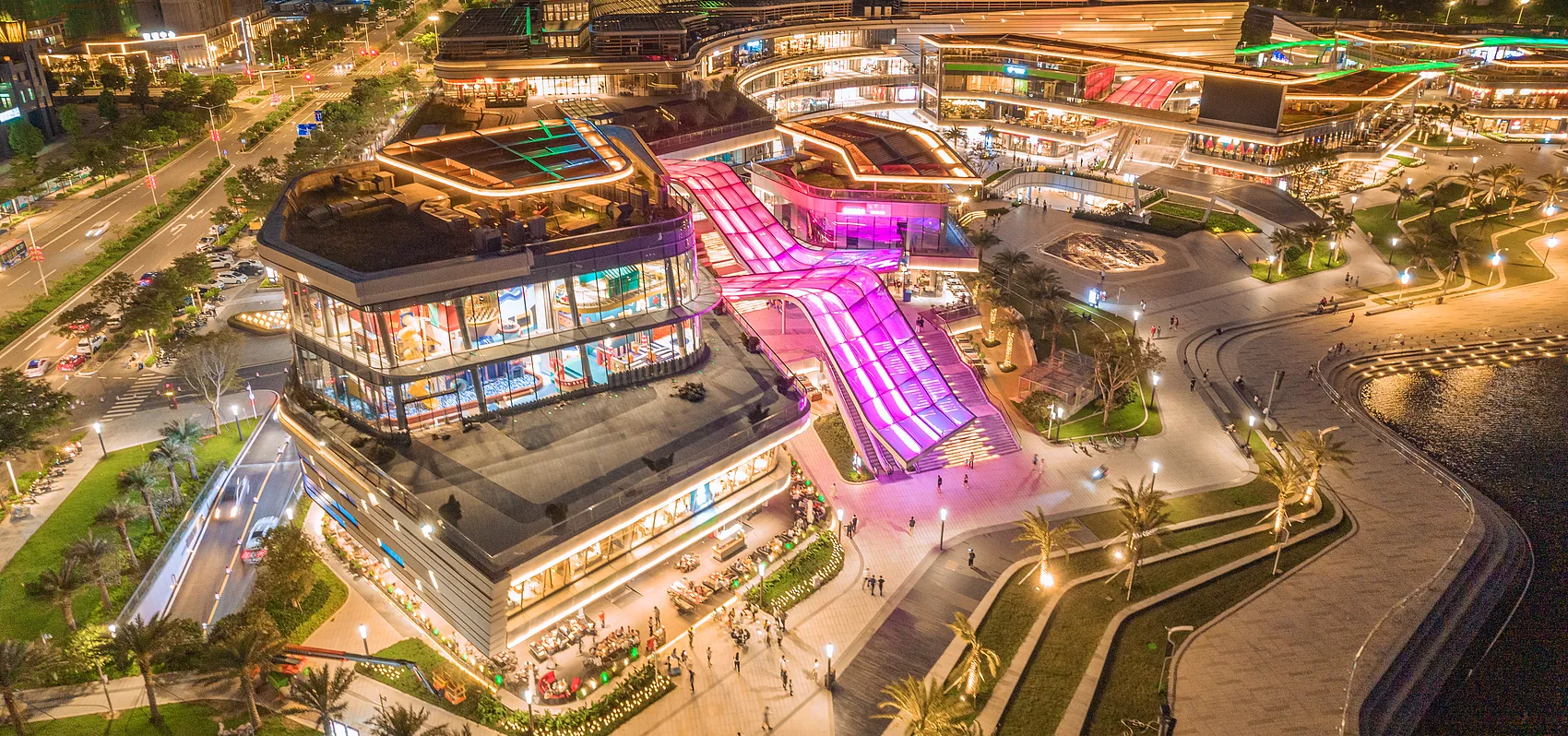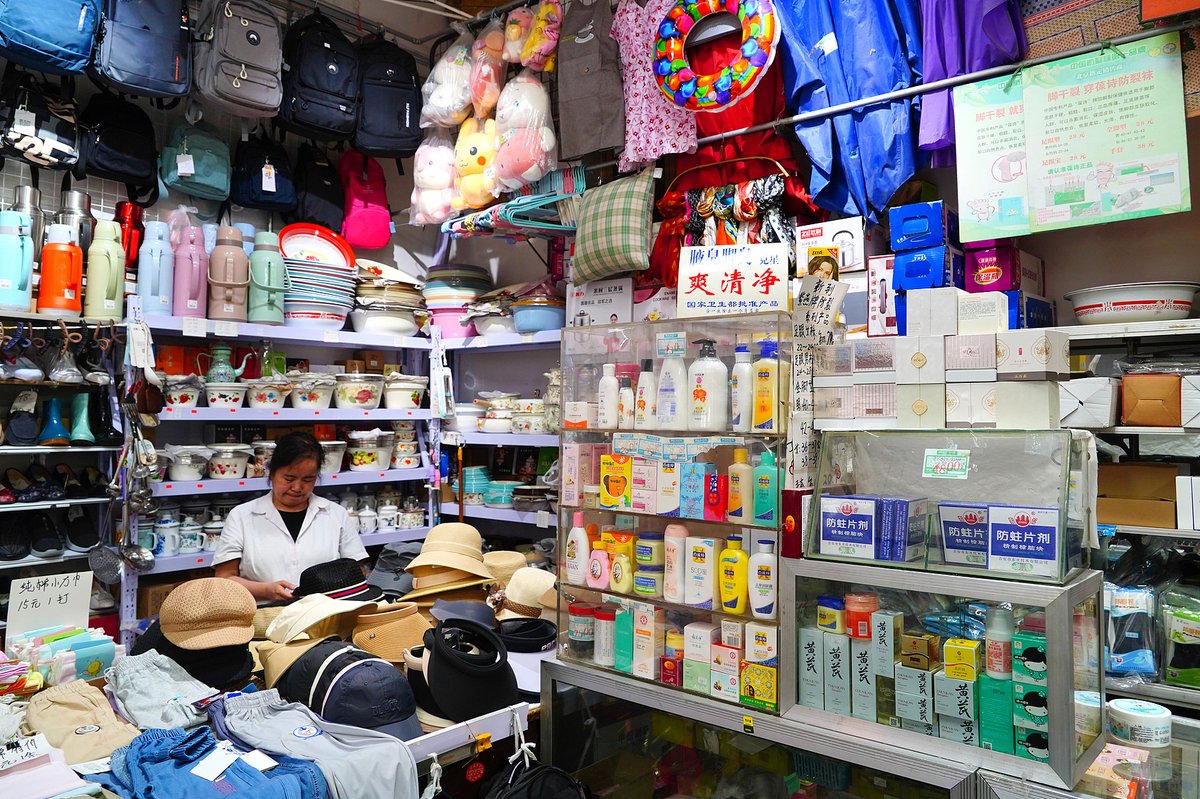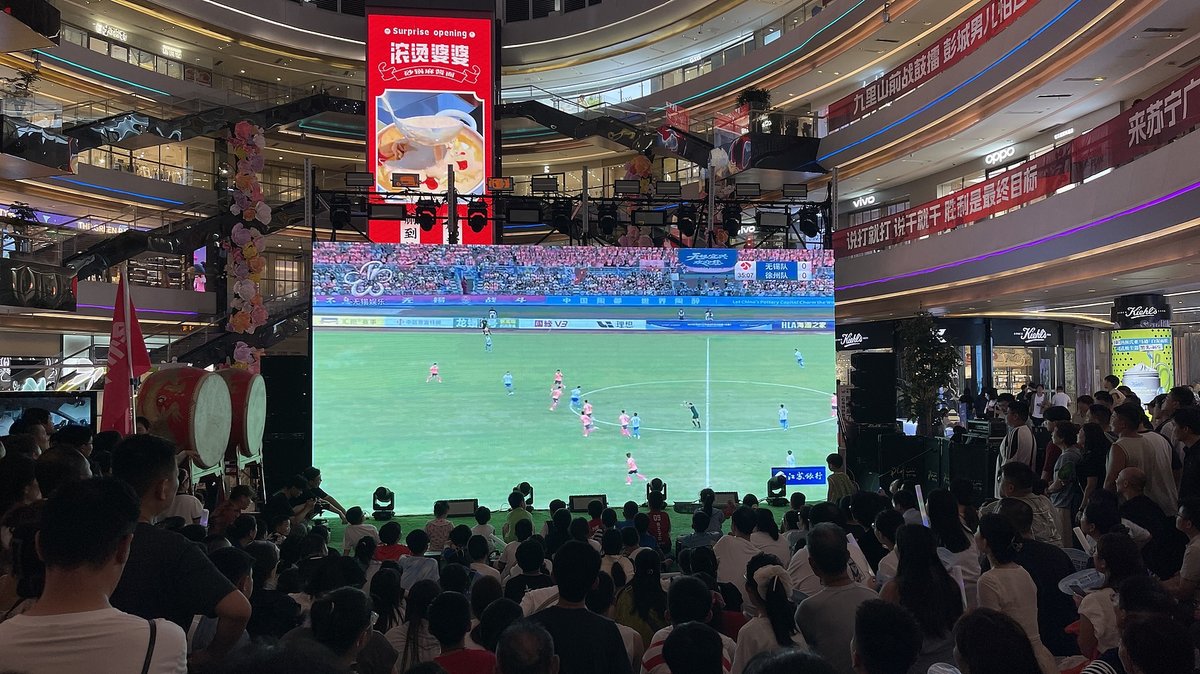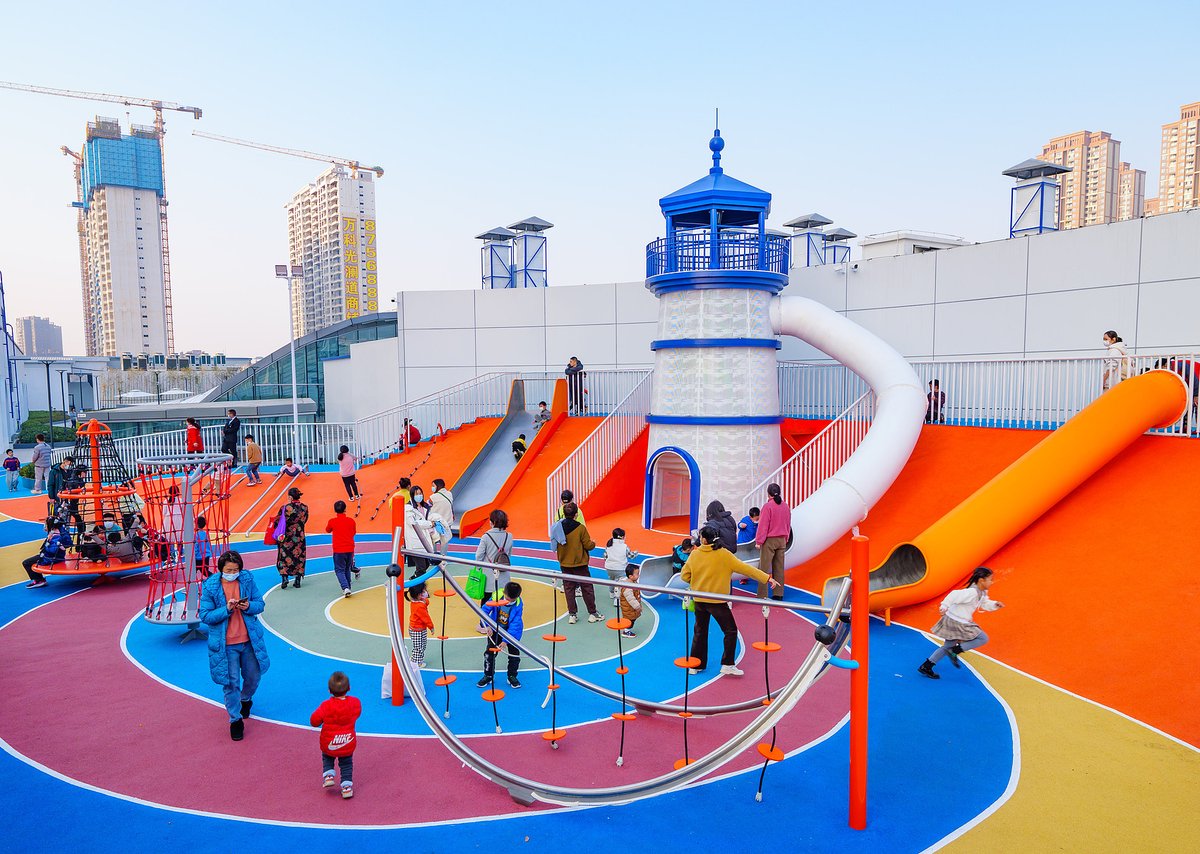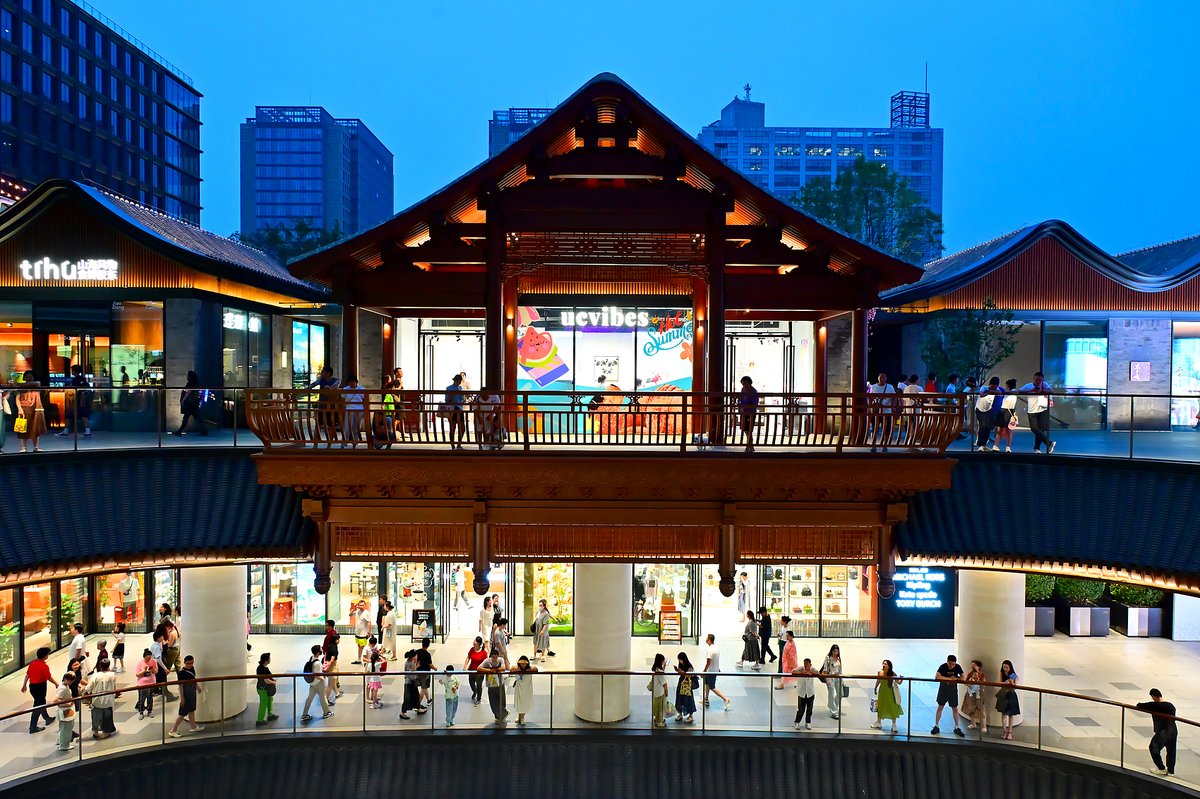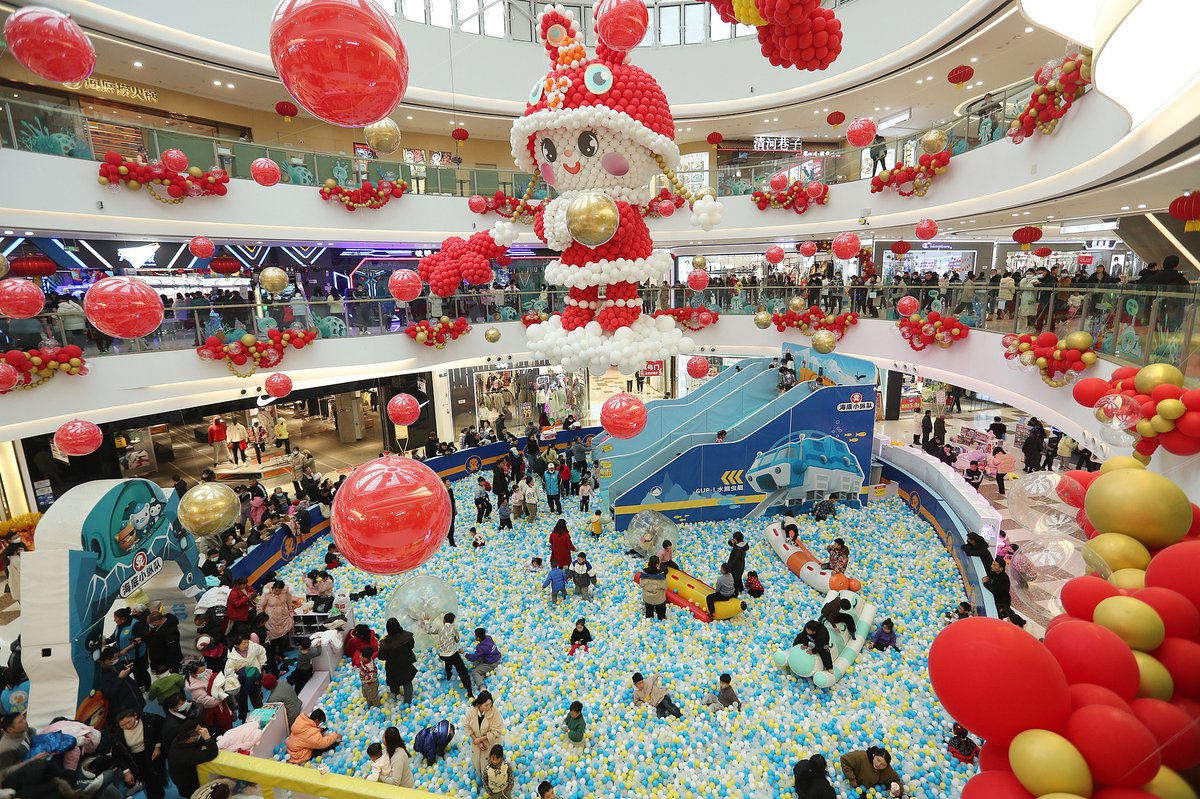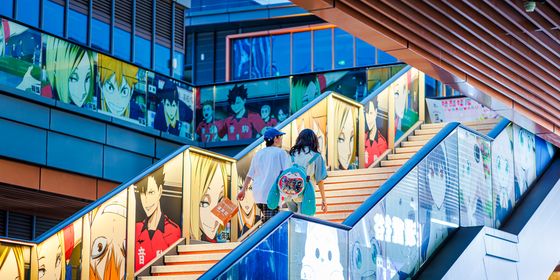As China’s malls struggle in an era of e-commerce and slowing consumption, some are becoming lifestyle hubs, nostalgic sanctuaries—and even public service centers
When Guo Yunqi steps into a mall, shopping is usually the last thing on her mind. Typically, the 28-year-old heads straight for the food court to meet friends. “If I really need something, I can just buy it online,” she explains.
As China’s economy slows down and online shopping booms, malls across the country are losing their old appeal and struggling to retain customers like Guo Yunqi. Instead of just being a place to shop, malls are trying to reinvent themselves as destinations for socializing and leisure.
Forty years ago, when the concept of shopping centers (购物中心) was first imported into China, malls seemed like an unstoppable trend in China’s consumer economy. In the 1980s, Chinese department stores, inspired by the American shopping mall, began to add canteens and recreational offerings like karaoke lounges, bars, and ballrooms to their premises.
In the decade that followed, foreign retailers like Carrefour entered the Chinese market. They popularized the idea of one-stop shopping and inspired domestic competitors to integrate dining, leisure, and entertainment under one roof. Meng Siyuan, a writer in her 30s based in Shanghai, remembers the local mall, Guoshang, as both a playground and a refuge during her childhood in the 1990s.
Discover more about consumer trends in China:
- Can a Local Supermarket Save China’s Offline Retail Sector?
- How Livestreams Became China’s Newest Tool for Selling Books
- As the “2D Goods Economy” Explodes in China, Can Fantasy Worlds Solve Real-life Woes?
“It had everything—daily necessities, food, and drinks. Whenever we needed something, we’d go there,” she says. Apart from the hosting one of the few large supermarkets in her hometown, a small city in Zhejiang province, for nearly a decade, Guoshang had jewelry counters, skincare booths, fashion boutiques, and electronics stores; and holiday activities, like lantern riddle exhibitions during the Lantern Festival; and was a place where one could go when feeling low, and always run into a neighbor or friend. “You always found the thing you need,” says Meng.
The rise and hollowing
China’s first modern mall is said to be Teemall in the southern city of Guangzhou. When it opened in 1996, tens of thousands of visitors made use of its department store, supermarket, buffet, and roller-skating rink each day. By the 2010s, malls had become standard fixtures in every urban center, and evolved into ever-expanding complexes packed with restaurants, cinemas, children’s play areas, fitness centers, and pop-up exhibition halls...anything to make the modern consumer stay and spend.
This same era in China also saw a boom in the retail sector. Average disposable incomes more than doubled, and demand rose for fashion, dining, electronics, and leisure. In the two decades following 2003, leading developer Wanda opened over 500 malls across the country. For real estate developers, building mega-malls became a powerful tool for securing land-use rights from local governments, who in turn saw shopping centers as a way to achieve urbanization targets, generate rental income, and boost consumption—and the prices of nearby apartments.
However, as e-commerce became a cost-effective and time-saving alternative to offline shopping, and the property sector cooled, this strategy became unsustainable. Countless malls are now struggling to survive. This April, when their lease expired, Rainbow Mall, once one of Beijing’s best-known shopping destinations, shut down after 15 years of operation due to its parent company’s falling revenue. In 2024 alone, more than 40 malls closed out of over 6,000 operating nationwide, most of which had been in operation for a decade or more, according to financial research platform Yilantop.
“In these malls, all the brands and stores look the same. People come once and never return,” says Zhang Yin, a business consultant in his 40s from central China. To him, most malls today become nothing but scenic backdrops—pleasant to look at, but empty and generic, without a unique sense of place or experience.
For Zhang, malls need to turn themselves into real community hubs to survive. Instead of retail, regular events and activities are now crucial for giving people a reason to visit a shopping center more than once. That transformation is already underway, with malls in cities like Shanghai, Beijing, and Wuhan rebranding themselves as sellers of “experiences.” In 2023, Bailian ZX mall in Shanghai hosted over 700 anime and pop culture events within just 18 months, drawing over 15 million visitors and grossing over 500 million yuan. In Wuhan, X118 similarly leaned into anime themes and saw a 32 percent increase in its revenue since its reopening in 2023.
But just as homogeneity killed off the retail sector of many malls, many shopping centers’ rebranding efforts also lack originality. “Malls don’t need to sell so many goods, but need a distinct theme,” says Zhang. A mall in Zhengzhou, which was redesigned around cosplay and anime last October, only saw traffic when there was an event, he recalls. “The rest of the time, it was empty.”
Last year, Zhang’s team helped transform a former rice warehouse into a hybrid mall. The initial buzz faded quickly. “People came during holidays and after work dinners, but not much else,” Zhang tells TWOC. In response, his team quickly changed their strategies, introducing themed bar nights, coffee workshops, and costume parties. “The idea is to create a reason to stay and enjoy the space itself,” says Zhang. “It’s not about turning malls into scenic spots, but offering high-quality, everyday experiences that people want to come back for.”
Charm of the old ways
Many mall developers are leaning into localization as a way to escape the copy-paste model. Instead, shopping centers are embracing nostalgia, local culture, and storytelling—tools that not only draw traffic through novelty, but also build emotional connections.
In Shanghai, a Raffles mall recreates life in the city’s 1990s alleyways, where visitors can spot wax-figure grannies selling magnolia flowers, retro TV sets, and street ping-pong tables—scenes that appeal to nostalgia. In Changchun, Wuyue Plaza weaves in symbols of the city’s automotive and film heritage to stir a sense of pride among older generations. In Shenzhen, Vankeli revives the essence of old Canton with neon signage, vintage phone booths, and train station replicas. These aim to make the mall feel less like a retail space and more like a stroll down a collective memory lane.
The once-overlooked underground floors, often reserved for food courts and other low-cost businesses due to the cheaper rent, have also quietly become some of the most dynamic spaces in malls. The ground floors have shifted from cosmetics and jewelry to bubble tea stalls, trendy collectibles, and digital gadgets aimed at younger crowds.
Commercial planner Ge Hong sees this as a necessary evolution. According to Ge, rather than chasing luxury flagships, many malls now target utility and community. “It’s a strategy born out of necessity,” says the 28-year-old from Beijing, who requested to use a pseudonym in the piece. In a Beijing mall she worked on this year, Ge saw a reshuffling of tenants: the ground floor, once lined with fashion boutiques, now houses gold jewelry, car shows, and household appliance stores. “You need reliable revenue to support more experimental or riskier ideas,” adds Ge.
For Ge, a mall is also a community space. In a recent renewal project at a Beijing mall, she plans to add a badminton court and designated areas for children and pets, based on feedback from local residents. “A mall should be somewhere people want to spend time—even if they don’t buy anything,” she tells TWOC. Some malls, she adds, even include marriage registration offices and low-cost community canteens. “Since malls are often centrally located, they’re naturally well-suited to meeting everyday needs. Many are already serving as informal community centers.”
This approach reflects a broader transformation in the role of malls. Guo Zengli, director of China Shopping Center Development Association of Mall China, explained to Phoenix Business Weekly in 2023 that malls are increasingly evolving from purely commercial venues into spaces that blend commerce with public services—combining shopping centers with art galleries, libraries, and museums to meet rising social demand.
And while many traditional malls still struggle to stay afloat, some older ones are winning over young customers with their vintage appeal. Faded interiors, handwritten receipts, and chatty salesladies have become unexpected draws for a younger generation. “Everything was cheap, and the service felt warmer,” recalls Guo Yunqi, who visited a decade-old mall in Beijing in 2023.
She found unexpected joy in the old-fashioned checkout process: prices get penciled in by hand before being typed into a register from the 1990s. “It still retains that old-school system, not just scan and pay like today. I found that pretty charming,” says Guo Yunqi. She ended up staying for hours, leaving with a retro camisole. On social media platforms like Xiaohongshu, hundreds of visitors treat these malls as nostalgic backdrops, posing under vintage signage and sharing their experience online.
Small-town boom
While metropolises may lament the decline of malls, China’s smaller cities are still embracing them like never before. For “low-tier” cities that lack large shopping centers, recognizable brands, and variety in leisure activities, the arrival of big brands can feel like a cultural milestone.
Liu Ya, a middle school teacher in her 30s who moved back to her hometown of Wuhu, Anhui, from Beijing in 2021, has seen her local mall come alive with the recent opening of Hema supermarket. “In Beijing, malls like this are a dime a dozen,” says Liu, who asked to use a pseudonym. “But back home, they’re still a novelty. It’s where everyone goes—especially during holidays, since there aren’t many other places to hang out.”
In lesser-known cities, malls retain their cachet as symbols of urbanization. “It’s like we’re catching up with big city trends,” Liu says, “even if it’s just by going for a cup of coffee.” With limited entertainment options beyond karaoke and movies, the arrival of brand-name chains promises young people like Liu that, at least when it comes to lifestyle and shopping, they can have it just as good as their big-city peers.
Developers and chain stores, too, are attracted to smaller cities for lower rental costs, which can generate higher returns. According to the China Chain Store and Franchise Association, nearly 400 shopping centers opened across the country in 2023, with about 40 percent in third-tier cities and below, nearly triple the rate of first-tier cities. When a Wanda Plaza opened in Shehong, Sichuan, in late 2023, over 400,000 visitors flocked to the complex in the first week to check out the popular brands like Pizza Hut and Chagee milk tea. In Yidu, Hubei, another Wanda Plaza opened last January, and made over 17 million yuan in sales during its first week.
Planner Ge sees the trend as a rational shift. “It’s too competitive in big cities,” she says. “Everything is expensive. But in smaller cities, there’s space, there’s curiosity, and there’s demand. Whether it’s a new brand or a new kind of space, it has room to grow.”
Ge believes the demand for malls won’t disappear anytime soon. “People think malls are dying,” she says. “But as long as people live in a neighborhood, they’ll need places to gather, to eat, to bring their kids. Malls won’t disappear—they’ll just evolve.”
Zhang, the business consultant, believes the next evolution won’t be about aesthetics, but content. “A mall shouldn’t just be a shell for beautiful lifestyles. It should contain the content of life itself. A place to drink tea, join book clubs, and talk to strangers. This is what life’s about.”
How China’s Malls Are Rewriting Themselves is a story from our issue, “Urban Renewal.” To read the entire issue, become a subscriber and receive the full magazine.
